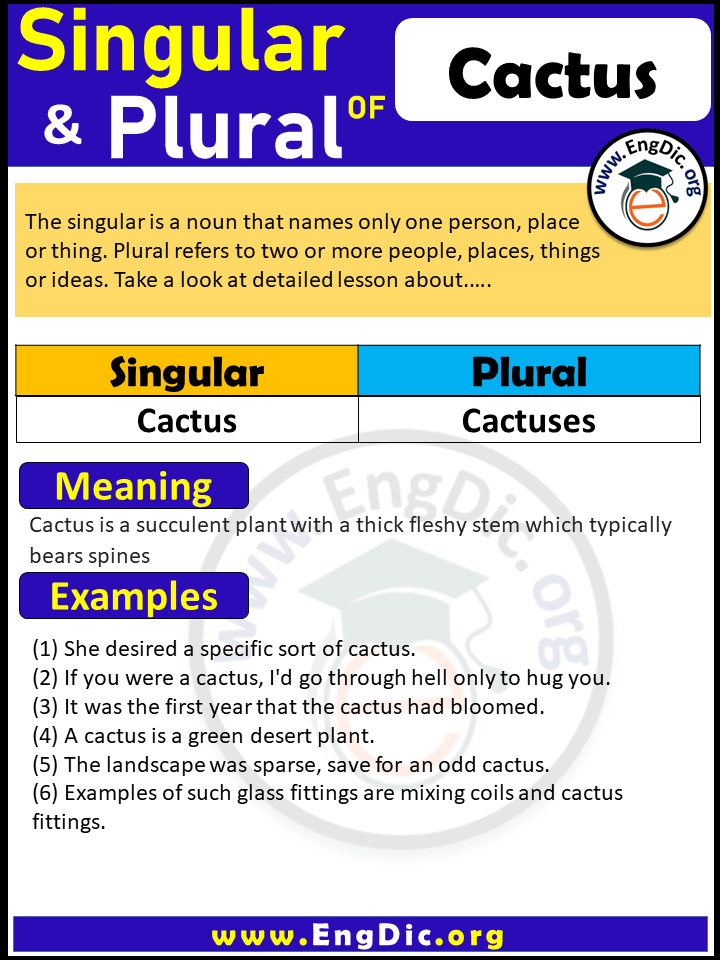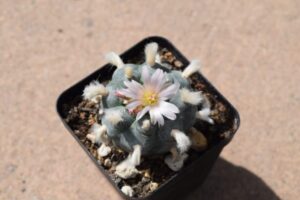When it comes to the world of English nouns, the pluralization of specific terms can often stir confusion. One such term is “cactus,” a word that evokes images of desolate landscapes adorned with spiky, resilient plants. Understanding its plural form not only adds clarity to communication but also enriches one’s linguistic repertoire.
The term for more than one cactus, intriguingly, is “cacti.” This Latin-inspired pluralization serves as a vivid reminder of the word’s etymological roots. The allure of cacti goes beyond their arid habitat; these remarkable plants boast a variety of shapes, sizes, and striking colors, making their pluralization all the more quintessential to discussions about desert flora.
To truly appreciate the correct usage of “cacti,” it is essential to delve into the details surrounding its grammatical framework, contextual applications, and the beauty these plants represent.
Understanding Pluralization: A Study in Linguistics
The transition from singular to plural in English typically involves the addition of an “s” or “es.” However, some words diverge from this conventional route due to their Latin origins. “Cactus” is derived from the Greek word “kaktos,” and like many words imported from Latin and Greek, it retains its original pluralization. This idiosyncratic feature not only enriches the English language but also challenges speakers to embrace linguistic diversity.
In this case, “cacti” follows the classical pattern where words ending in “-us” transform into their plural forms by adopting the “-i” suffix. This approach is not exclusive to “cactus.” Other words such as “fungus” (fungi), “nucleus” (nuclei), and “alumnus” (alumni) also adhere to this principle. An understanding of these patterns enhances one’s vocabulary and comprehension of nuanced English terms.
Contextual Applications: Fostering Communication Clarity
While the correct plural form of “cactus” is undeniably “cacti,” there are instances where the use of “cactuses” is also accepted, particularly in everyday conversation. This form, while less conventional, caters to those unfamiliar with the Latin roots, making communication more accessible to broader audiences. However, utilizing “cacti” showcases linguistic sophistication and engagement with the language’s rich heritage.
When crafting sentences that include this pluralization, context is key. For instance, one might say, “The arid landscape was dotted with numerous cacti,” effectively conveying both a sense of abundance and a connection to the environment. The visual imagery here accentuates the aesthetic appeal of the plural form; it suggests a thriving ecosystem where these plants thrive despite harsh conditions.
Conversely, one may encounter a sentence such as, “The gardener tended to several different types of cactuses, each displaying unique qualities.” While perfectly understandable, this construction lacks the finesse offered by the classical “cacti.” A subtle shift in wording can elevate a sentence from mundane to evocative.
The Aesthetic Appeal of Cacti: Nature’s Masterpieces
Cacti themselves are more than mere subjects of grammatical curiosity; they are extraordinary manifestations of nature’s artistry. With their striking silhouettes, vibrant blooms, and intricate adaptations allowing them to flourish in inhospitable environments, cacti evoke a sense of wonder. From the towering Saguaro cactus, which can soar to heights of 40 feet, to the delicate blooms of the Echinopsis, bursting with color, the diversity within the cactus family is astounding.
Incorporating the word “cacti” into conversation or writing can enhance appreciation for their beauty. For instance, “The cacti in the botanical garden were arranged artfully, showcasing their unique forms against a backdrop of golden sand.” This sentence invites the reader to visualize a captivating scene, framing cacti not just as plants, but as integral components of an aesthetically pleasing design.
Additionally, the cultural significance of cacti cannot be overlooked. In many indigenous cultures, these plants have been revered for their medicinal properties and role in sustenance. Highlighting their plural form when discussing cultural practices or symbolism can enhance the depth of discourse, allowing for a richer understanding of their importance.
Cactus Varieties: An Explorer’s Voyage
Diving deeper, an exploration of the vast array of cactus species enriches both vocabulary and appreciation for these plants. With over 2,000 known species, cacti vary remarkably in form, color, and habitat. The globe’s deserts and dry regions host these plants, from North America’s Sonoran Desert to the rocky terrains of South America.
In a botanical discussion, one could refer to “the diverse species of cacti,” leading to deeper conversations about their ecological significance and the ecosystems they inhabit. This exploration can invigorate discussions around sustainability and conservation, particularly as climate change threatens many of these unique ecosystems.
The Correct Way to Embrace the Term
As we dissect the usage of “cacti,” it becomes clear that employing the term with intentionality can transform mundane descriptions into vivid, evocative narratives. By recognizing the pluralization as an opportunity to display linguistic prowess, one can craft sentences that resonate beautifully. “The cacti flourished despite the scorching sun” becomes not just a statement about plants but a celebration of resilience. It encapsulates a world where each cactus has a story, a struggle, and significance beyond mere existence.
In conclusion, whether you choose to include “cacti” or “cactuses” in your lexicon, understanding the nuances behind this pluralization enhances both communication and appreciation for these stunning, enigmatic plants. Harnessing the beauty of language to discuss cacti allows for deeper connections, fostering richer conversations with an air of sophistication. The singular becomes plural, the plant becomes a symbol, and language flourishes. Embrace the cacti, both in the wild and in conversation, and let their stories inspire you.





Leave a Comment